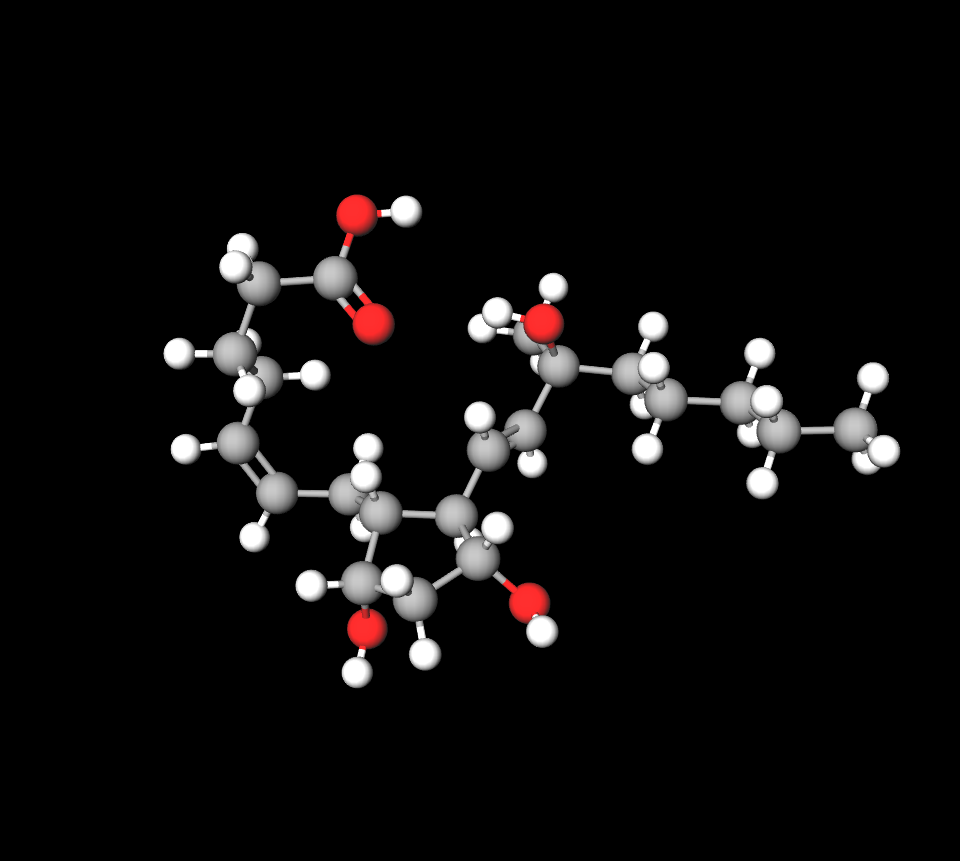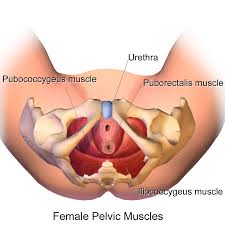Hemabate, Carboprost Tromethamine Injection
- Introduction to Hemabate
- Uses of Hemabate
- Composition and Mechanism of Action
- Dosage and Administration Guidelines
- Storage and Handling Precautions
- Side Effects of Hemabate
- Carboprost Contraindications
- Warnings and Precautions
- Special Populations
- Overdosage and Emergency Management
- Important Precautions for Use
- Handling Precautions for Medical Personnel
Introduction to Hemabate
Overview of Hemabate
Carboprost Tromethamine or Hemabate is a medication commonly used in obstetrics to treat postpartum hemorrhage (PPM), a condition that poses a risk to life after childbirth.
History and Development of Carboprost Tromethamine
The introduction of Carboprost Tromethamine represented a step in improving maternal health care services for women in need during the mid-twentieth century to tackle issues related to uterine atony and hemorrhage effectively and later evolved to offer enhanced treatment options for urgent obstetric situations, with improved results.
Role in Modern Medical Practices
Hemabate continues to play a role in addressing issues today. Its quick effects and strong effectiveness have made it a staple in labor units and emergency obstetric facilities globally.
Regulatory Status and Approvals
Hemabate falls under the category of prostaglandins and has received approval from agencies like the FDA. Its usage is closely monitored to guarantee both safety and effectiveness; comprehensive instructions are available for healthcare providers.
Uses of Hemabate
Primary Indications
- Management of postpartum hemorrhage (PPH): A critical intervention to prevent maternal mortality.
- Treatment of uterine atony: Restoring uterine tone effectively after childbirth.
- Therapeutic termination of pregnancy: A controlled option for medical terminations.

Off-Label Uses
- Facilitating second-trimester labor induction in specific medical conditions.
- Controlling hemorrhage during complex obstetric surgeries.

Composition and Mechanism of Action
Active Ingredient: Carboprost Tromethamine
Carboprost Tromethamine works by imitating prostaglandins that play a role in uterine contractions and hemostasis.

Pharmacodynamics
The Hemabate drug triggers contractions in muscles like those in the uterus to help expel any remaining products and lessen bleeding effectively for managing hemorrhages.
Pharmacokinetics
The drug gets absorbed quickly when given through a muscle injection. Its metabolic processes help break it down for elimination from the body to reduce any long-lasting effects on the system.
Dosage and Administration Guidelines
Recommended Dosage for Postpartum Hemorrhage
The usual amount is 250 micrograms given into the muscle. It can be repeated as required until reaching a total dose of 2 milligrams.
We follow a dosing schedule based on the age and how the patient responds to it. Effective monitoring is necessary to guarantee safety.
Route of Administration
To enhance its effectiveness and reduce side effects Hemabate is specifically given through an injection.
Guidelines for Dosage Adjustments
Patients with preexisting conditions or individuals who are particularly sensitive to prostaglandins may need some modifications in their treatment plan.
Storage and Handling Precautions
Optimal Storage Conditions
Remember to keep Hemabate in the refrigerator between 2°C and 8°C, and make sure to shield it from light and prevent it from freezing.
Shelf-Life and Stability
Make sure to look at the expiration dates on the packaging and throw away the solution if it looks discolored or has any particles in it.
Safe Handling Practices
Healthcare professionals should wear gloves. Make sure the solution stays clean when preparing and administering it.
Disposal of Unused Medication
Please follow the regulations when discarding any vials to prevent unauthorized individuals from accidental exposure.
Side Effects of Hemabate
Common Side Effects
- Gastrointestinal symptoms include nausea, vomiting, and diarrhea.
- Transient fever and chills due to systemic prostaglandin effects.
- Pain or tenderness at the injection site.

Rare but Serious Side Effects
- Hypertension requires immediate medical attention.
- Bronchospasm, particularly in patients with a history of asthma.
- Cardiac arrhythmias, though infrequent, necessitate close monitoring during administration.
Carboprost asthma
Carbo Prost can trigger bronchospasms. This leads to an increased shunting fraction, abnormal ventilation-perfusion ratios, and hypoxemia in some cases. Patients with asthma are more prone to experiencing these issues; however, rare instances of bronchospasms have been reported in patients without asthma.

Carboprost Contraindications
Known Drug Interactions
Carboprost Tromethamine is a substance that has effects on the body and should be used carefully with other medications to avoid any complications or risks associated with it interacting with oxytocics like oxytocin. It can increase contractions in the uterus, leading to potential issues, like uterine rupture or hypertonicity, when taken together with nonsteroidal anti-inflammatory drugs (NSAIDs). It may worsen stomach-related side effects or impact prostaglandin metabolism.
Absolute Contraindications
- Hypersensitivity to prostaglandins: Patients with known allergic reactions to prostaglandins should avoid Hemabate to prevent severe anaphylaxis.
- Presence of pelvic inflammatory disease: The use of this medication can worsen infections in the pelvic region, leading to severe complications.

Relative Contraindications
- Asthma: Prostaglandins can induce bronchospasm, posing risks to individuals with reactive airway disease.
- Cardiovascular diseases: The medication may elevate blood pressure, necessitating caution in patients with hypertension or heart conditions.
Carboprost nursing interventions
Prostaglandins can result in narrowed blood vessels leading to blood pressure concerns. Hence caution is advised when using Carboprost in individuals with a past record of hypertension.
Warnings and Precautions
Risks of Improper Administration
Improperly administering Hemabate could lead to effects, so it's crucial for healthcare providers to follow the prescribed dosages to reduce the chances of any harm occurring.
Monitoring During Treatment
- Blood pressure: Regular monitoring is essential to detect hypertension or hypotensive episodes early.
- Uterine response: Over-contraction or insufficient response requires immediate intervention to optimize outcomes.
Risk of Uterine Rupture
Patients who have undergone surgery or have had multiple pregnancies are more likely to experience rupture, so it's crucial to closely monitor them when administering Hemabate.
Special Populations
Administration to Pregnant Women
In cases of abortions or severe pregnancy complications, Hemabate can be a life-saving option. Nevertheless, it does come with risks, such as rupture or incomplete abortion, highlighting the need for thorough medical supervision.
Administration to Nursing Mothers
There is some evidence that Carboprost Tromethamine might pass into breast milk in quantities but caution is recommended when giving it to nursing mothers as no major harmful effects have been observed so far.
Administration to Elderly Patients
Hemabate is not commonly used in patients because clinical information about its effects is available in this population group. Physicians need to take into account any existing health issues, such as heart and kidney conditions, before deciding to prescribe Hemabate to patients.
Administration to Pediatric Populations
It's very rare to use it in children's groups. It's hard to find data regarding its safety and effectiveness in this age group, so one must be extremely careful if considering its use in individuals.

Overdosage and Emergency Management
Symptoms of Overdosage
- Severe uterine hypertonicity: Excessive contractions that can lead to uterine rupture.
- Systemic toxicity: Symptoms may include nausea, vomiting, fever, and severe cardiovascular disturbances.
Steps in Emergency Management
- Supportive care: Stabilize the patient with fluid management and oxygen support as needed.
- Symptomatic treatment: Address specific symptoms, such as hypertension or respiratory distress, with appropriate medications.
Important Precautions for Use
Pre-Administration Evaluation
- Screening for contraindications: Comprehensive patient history and physical exams are crucial.
- Assessment of patient history: Identify underlying conditions that could complicate treatment.
Post-Administration Care
- Monitoring for adverse reactions: Track patient response to detect any early signs of complications.
- Ensuring efficacy: Confirm that the medication achieves its intended therapeutic goals, particularly in hemorrhage control.
Handling Precautions for Medical Personnel
Avoiding Accidental Exposure
Effective safety measures must be implemented to avoid exposure while handling and administering the solution, such as refraining from skin contact or breathing in any vapors emitted.
Protective Equipment Requirements
Healthcare workers must wear gloves and masks. Use gowns when administering Hemabate to reduce physical contact and guarantee safety.
Guidelines for Preparation and Administration
Make sure to set up the medication in an area, check the dosage, and label it accurately to prevent any mistakes during administration procedures. Remember to use techniques while giving the injection to keep the patient safe.
Hemabate, Carboprost Tromethamine Injection FAQ
- Why does carboprost cause diarrhea?
- Why is carboprost used in pregnancy?
- Why carboprost contraindicated in asthma?
- When is carboprost contraindicated?
- Carboprost when to give?
- What does carboprost tromethamine do?
- What is carboprost used for in pregnancy?
- What is carboprost tromethamine used for?
- How is carboprost tromethamine administered?
- How does carboprost cause bronchospasm?
- Carboprost how does it work?
- Can carboprost cause hypertension?
- Can carboprost tromethamine cause diarrhea?
- Can carboprost be given IM?
- Can carboprost cause diarrhea?
- Are misoprostol and carboprost similar?
- Why does carboprost cause diarrhea?
- Why is carboprost used in pregnancy?
- Why carboprost contraindicated in asthma?
- Carboprost which prostaglandin?
- When is carboprost contraindicated?
- Carboprost when to give?
- What does carboprost tromethamine do?
- What is carboprost used for in pregnancy?
- How is carboprost tromethamine administered?
- How does carboprost cause bronchospasm?
- Can carboprost cause hypertension?
- Can carboprost tromethamine cause diarrhea?
- Can carboprost be given IM?
- Can carboprost cause diarrhea?
- Are misoprostol and carboprost similar?
Why does carboprost cause diarrhea?
Carboprost tromethamine also stimulates the muscles in the system to tighten up.
Why is carboprost used in pregnancy?
Carboprost is given via injection to trigger abortion by causing contractions in the uterus to those experienced during labor and helping with dilation.
Why carboprost contraindicated in asthma?
Avoid administering Carboprost to individuals with asthma as it has the potential to exacerbate bronchospasms that can be life-threatening.
When is carboprost contraindicated?
Caroprost tromethamine is not recommended for people with kidney or liver conditions.
Carboprost when to give?
Usually, this process is conducted around the week of pregnancy.
What does carboprost tromethamine do?
Carlopert injections are given to help induce abortion by causing contractions during childbirth and aiding in dilation, serving as an oxytocic agent in the procedure.
What is carboprost used for in pregnancy?
Carbo prost tromethamine is a prostaglandin used to treat postpartum bleeding due to atony when other treatment options have not been successful.
What is carboprost tromethamine used for?
Carbo prost tromethamine is a form of prostaglandin used to treat postpartum bleeding due to atony when other treatment options have not been successful.
How is carboprost tromethamine administered?
For grown-ups, Start with an injection of 100 to 250 micrograms (mcq) given into a muscle initially; then follow up with doses ranging from 250 to 500 mcq every one and a half to three and a half hours for up to two days.
How does carboprost cause bronchospasm?
It's best to steer off carboprost in women with health issues because it might cause bronchospasm by affecting muscle contraction as it acts as a prostaglandin analog.
Carboprost how does it work?
Carbo prostaglandin is given through injections to initiate abortion procedures working by causing contractions resembling those during childbirth and helping in the dilation of the cervix.
Can carboprost cause hypertension?
In both animals and humans alike, carboprost can result in an increase in blood pressure due to the contraction of muscles in blood vessels.
Can carboprost tromethamine cause diarrhea?
Frequent loose bowel movements can occur when carboprost tromethamine causes muscle contractions in the body.
Can carboprost be given IM?
Yes
Can carboprost cause diarrhea?
One of the side effects associated with using carboprost is feelings of nausea and stomach discomfort.
Are misoprostol and carboprost similar?
Misoprostol and carboprost are drugs that aid in contractions. Lower the chances of bleeding post-childbirth (PPA). When misoprostol is used vaginally, carboprost administration may lead to increased blood loss.
Why does carboprost cause diarrhea?
Carboprost Tromethamine can also stimulate the muscle's in human gastrointestinal tracts.
Why is carboprost used in pregnancy?
Carboprost is given through injections for abortion procedures, working by causing contractions like those and aiding in dilation.
Why carboprost contraindicated in asthma?
Carrying out the administration of Carboprost to individuals with asthma is not recommended as it may exacerbate bronchospasms that can be life-threatening.
Carboprost which prostaglandin?
Carprost is a form of a hormone known as prostaglandin F₂α.
When is carboprost contraindicated?
Individuals experiencing kidney or liver complications are advised against utilizing Carboprost tromethamine.
Carboprost when to give?
It is usually given around the week of pregnancy.
What does carboprost tromethamine do?
Carprpost is given via injection to help with abortion procedures by causing contractions to those in childbirth and assisting in dilation.
What is carboprost used for in pregnancy?
Carprost tromethamine is a medication made from prostaglandins that is used to treat postpartum bleeding due to atony when other treatments have not worked effectively.
How is carboprost tromethamine administered?
For adults, initially give a deep muscle injection of 100 to 250 micrograms (mcg), followed up with doses of 250 to 500 mcg every one and a half to three and a half hours for two days.
How does carboprost cause bronchospasm?
Carpoprost is an analog that causes the contraction of muscles and could potentially lead to bronchospasm in women, with impaired right ventricular function. Something best avoided.
Can carboprost cause hypertension?
Carboprost could result in blood pressure in both animals and humans when given in quantities by constricting vascular muscle fibers smoothly.
Can carboprost tromethamine cause diarrhea?
Frequent bowel movements can occur when carboprost tromethamine causes the muscles in the body to contract excessively.
Can carboprost be given IM?
When Carboprost tromethamine is administered via an injection into the muscles of women's bodies, it initiates contractions in the uterus that mimic those experienced during labor at the conclusion of a full-term pregnancy.
Can carboprost cause diarrhea?
The common negative effects associated with using carboprost are feelings of nausea and stomach discomfort.
Are misoprostol and carboprost similar?
Misoprostol and carboprost are two types of medicines that assist the uterus in recovering its strength and lowering the chances of bleeding following PPH). When misoprostol is used vaginally, it might lead to blood loss as opposed to administering carboprost through injection.






